Guest Post: Top 10 Specialty Diet Saving Tips: How to Save When You Are Living Gluten-Free + More
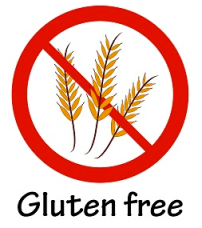
Guest Post by Patti Laurens from WithorWithoutCoupons.com
Shopping with coupons is fun! I enjoy saving money and finding “the deals!” However, I find that when I’m shopping for my specialty diet (gluten-free), the coupons and deals are harder to come by than it looks on all the blogs and TV shows. I have never “made money” or left the store paying less than $1 for a grocery cart full of gluten-free groceries like they show on TV. However, I have consistently paid 50% or less for all of my gluten-free groceries, week after week, month after month for years. How do I do it? Read on for a few tips on how to shop on a specialty diet:

1. Become friends with your favorite store’s butcher. Most (not all) grocery stores discount meat a day or so before its “sell by” date. In most cases, it is still good for a day or two after this date. Also, it can easily be frozen for use later. This is the biggest way I save money on meat. I buy it when it is either on sale “buy 1 get one free” or when the butcher has marked it down. Talk to your butcher and find out if he marks down the meat at a certain time of day. If you buy a decent quantity of meat (I’m thinking about you, paleo diet folks!), ask that your butcher call you when there is a large mark down taken. You may be able to score big – and he’s able to get rid of a lot of meat! Stockpile for long term savings.

2. Learn your veggies. The easiest way to save money on fresh vegetables and fruit is to buy in season. This is an AMAZING resource to learn from online: https://www.fruitsandveggiesmorematters.org/what-fruits-and-vegetables-are-in-season. In-season fruits and vegetables are always cheaper than those out of season. Stock up when they go on sale and freeze the extras for use year-round.
3. Look to online deals for specialty items. I live in a small town with limited resources. I simply cannot find a variety of gluten-free items at a reasonable price ($6-8 for a loaf of gluten-free bread is too much for my coupon-loving heart to take!). I go online and buy basics in bulk to cut down on cost. For your specialty diet, do some basic searches to see if you can buy directly from the manufacturer online OR look to Amazon.com for some AMAZING grocery deals on specialty items. New websites are popping up all the time catering to specialty diet consumers. I just found out a few weeks ago about GlutenFreeSaver.com a daily deal site like Groupon for gluten free folks! Spending a little time on Google could save you a lot in the long run on your grocery bill.
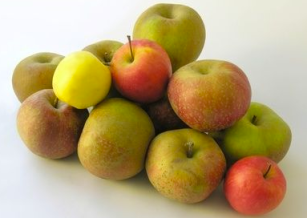
4. Learn how to properly store your groceries. This seems silly, but you can save a lot of money by not wasting your specialty diet foods. For example, I NEVER knew that apples stored in the fridge in the “veggie drawer” in a cardboard box lasted weeks! I thought apples were to be placed on the counter! Spend a few minutes online (here’s a great resource: https://ecologycenter.org/factsheets/veggie-storage.pdf) and extend the life of your groceries.

5. Remember that coupons are still your friend, even when on a specialty diet. Go to your favorite manufacturer’s websites and search for coupons or request them to be mailed to your house. Don’t feel like you have time to do this? Do you have time to watch your favorite TV show? Simply do your requests during commercials or the boring parts 😉 Look out for “peelie” coupons on your favorite foods themselves, as well. Watch Collin’s listing of coupons each week in the paper as more and more are coming out for specialty food items. If a good coupon pops up, buy a Sunday paper!

6. Ask your store manager where the “clearance items” are in your store. Most grocery stores have a shelf or two in an odd section of the store that contains marked down items. These items did not sell as well as anticipated and need to be sold quickly to make room for other items. In many cases, these items are “odd” items that the general public does not eat – hello, specialty diet folks! This is your “playground” – you may find nothing or you may find a variety of goods that help to round our your week’s groceries! Check it out!
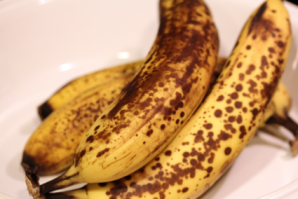
7. Ask your produce manager what is done with bruised or “old” vegetables and fruit in their store. In some areas, these items are given directly to food banks. In other areas, these items are marked down for customers to purchase at an “extreme” discount. I have gotten large bags of bananas (enough for multiple banana bread batches) for $1. Most of the time, you have to put in a little work to remove the bruises or you may have to throw out one “bad” item in the discounted bag, but you still get lots more for your money! Bruised fruit and vegetables are typically better for cooking or adding into a recipe, not as good for eating by themselves raw.

8. Buy in bulk and split with a friend. In many cases, buying specialty items in bulk creates an “automatic sale” by lowering the price per ounce of the item. However, you may not need as much as is required for the purchase. Find a friend with the same specialty diet and split the items to cut costs.
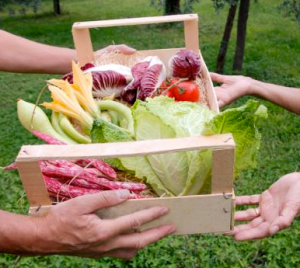
9. Farmer’s markets and CSAs (community supported agriculture) are great places for those with specialty diets. They often carry more variety than a grocery store and at lower prices too! Many CSAs offer boxes of veggies (or organic meat) on a weekly or monthly basis. Often times, this is a BIG box that can easily feed a family in a week. If the prices are still too high for your family, see if you can get a discount (or free!) box by trading free labor for food. This is a GREAT way for someone making a HUGE specialty diet change to start off without a large investment.

10. Shop the sales. Just like with the average American diet, shop the sale ads to make your weekly meal plan. If it’s on sale, incorporate it into your plans and avoid buying foods that are not offered at a discount. If none of the foods on your specialty diet are one sale, look for the cheapest options within the list of appropriate items. Watch your price per ounce and purchase the items with the lowest price per ounce (the small number on the shelf tag at most grocery stores) to net the best savings.
Want to learn more about shopping for a specialty diet on a budget? Check out Patti’s ebook “With or Without Coupons: How to Save 50% or More at the Grocery Store” or visit her Facebook page. Additionally, Patti is offering a 50% discount on her ebook for Hip2Save readers! Just enter coupon code hip2save at the bottom of the page to receive your discount and you’ll pay just $9.99 for her 102-page ebook. Happy Shopping!



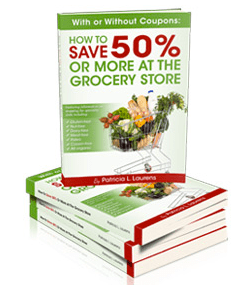





ok, the guy at the top is totally gorgeous!!!!
I was seriously just thinking that!! =)
I was just thinking I would LOVE to become friends with THAT butcher!
My thoughts EXACTLY!
Where is the like button! I eat so much rice…good thing I like that…gluten free is not cheap.
Glad you enjoyed the article (and the pictures!)
Please feel free to email me at patti@withorwithoutcoupons.com with any questions! Thank you, Collin, for the opportunity to write a guest post!
My tip: don’t write off discount chains like 99c Only stores for gluten free items. I regularly buy good sized bags of g-free corn pasta there. It’s actually good, & comes in 4 varieties (spaghetti, rotini, etc.)
Just wanted to add that I’ve read Patti’s ebook, With or Without Coupons, and found it incredibly helpful. There are over 40 different strategies in it for saving money on specialty diet groceries. My family of 5 eats gluten free and Paleo and we’ve saved hundreds of $$ so far, even though we only use a few strategies. (I’m a former couponing failure, so we’ve slowly been adding new strategies as the previous ones become habit.) My husband even read the ebook and is still consistently applying the strategies several months later (shocking, I know!)
Thanks!!!